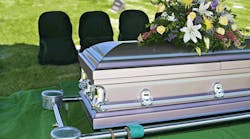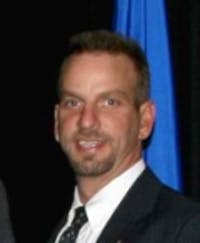In Ohio, like many other states, laws discourage employees from seeking any compensation for workplace injuries beyond what is offered through workers’ compensation. In the case of Houdek, whose recovery stretched over years, this meant that his medical bills were covered through the Ohio Bureau of Workers’ Compensation, as well as a portion of his lost wages and a lump payment to compensate him for having his leg amputated a couple of years after the accident as result of complications.
In addition, ThyssenKrupp also negotiated a $58,000 payment to Houdek under a provision of the state’s workers’ compensation law that allows injured workers to seek monetary awards if the state’s Industrial Commission determines the employer violated a specific safety requirement.
In Ohio, though it’s highly unusual, companies can be sued if injured employees can prove that the company deliberately wanted to injure that employee, lied to employees about the presence or toxicity of substances in the workplace or ordered safety guards removed.
However, it is very difficult to prove that the employer intentionally caused harm. Despite the fact that ThyssenKrupp negotiated a settlement for a Violation of Specific Safety Requirements (VSSR) award, received an OSHA citation related to the unsafe operation of a motorized vehicle and adopted new safety procedures including issuing reflective vests to employees and requiring the use of cones and gates to block aisles when employees were working there for extended periods, a Cuyahoga County Common Pleas judge ruled there was no case. The Eighth District Court of Appeals disagreed and said the case should go to trial. ThyseenKrupp then appealed to the Ohio Supreme Court.
On Nov. 21, 2012, two weeks before the Ohio Supreme Court issued its ruling, Houdek died of a heart attack at age 44.
In a vote of 6-1, the Ohio Supreme Court agreed with the ruling by the Cuyahoga County Common Please Court to throw the case out. Republican Justice Paul Pfeifer, who offered the only dissenting vote, wrote: “An intent to injure can be inferred from the facts and circumstances of a particular case. Otherwise, an injured worker would be dependent on an employer's confession to make his case.”
I’m certain that ThyssenKrupp does not intentionally try to injure or kill its employees, so in this case, I believe the Ohio Supreme Court made the correct ruling. I’m equally certain that Houdek’s co-worker would give anything to have avoided smashing into him.
I’m also certain that Houdek’s horrific injuries placed a glaring spotlight on flaws in ThyssenKrupp’s safety procedures (or lack thereof). It’s not enough to write a check for wages and for workers’ compensation premiums and hope for the best.
In the case of Bruce Houdek, who suffered for more than 3 years as a result of his injuries, the use of safety vests, aisle gates and movement sensors and alarms came too late. Did he deserve a multi-million dollar settlement from his former employer? I don’t know. But he certainly deserved better than he got.

